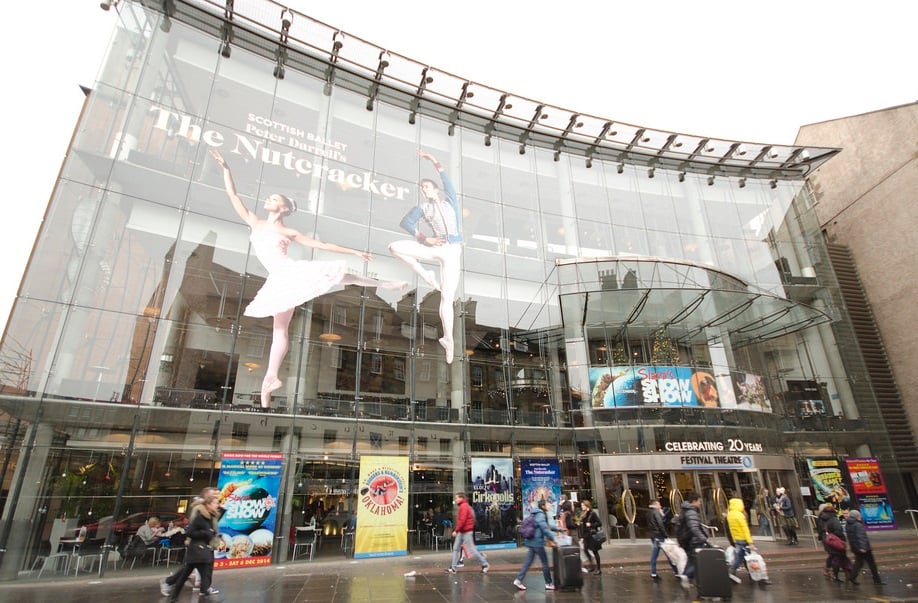
The Festival Theatre in Edinburgh
Photo: Dancewear Central on VisualHunt.com / CC BY
Cultural attendance on the rise in Scotland
More than nine in ten adults either attended a cultural event or place, or participated in a cultural activity in 2017.
Cultural attendance in Scotland has risen by six percentage points in the last five years, according to the latest findings from the Scottish Household Survey.
Attendance at cultural events or places in the country, which was 78% in 2012, has now risen to 84%. The figures include attendance at live music, cinemas, museums, theatres and libraries.
When cinemas are excluded, the proportion of people attending cultural events or places has risen from 70% to 77% during this period.
The biggest rise was for historical and archaeological sites, where the proportion of the population attending has risen from 28% to 35% over the past five years. The number of people who attended street art events has risen by six percentage points, from 12% to 18%.
Cultural participation
Alongside cultural attendance, the survey also tracks participation in cultural activity. The proportion of people who participate in culture remains unchanged since 2012 at 78%.
The most popular activity is reading for pleasure, with 65% of people in Scotland doing this in the past year. When this category is excluded, the level of cultural participation has risen from 48% to 54% over the past five years.
This means that overall, 93% of adults in Scotland engaged with culture (including attendance and participation) in 2017. This represents an increase of three percentage points since 2012.
The survey also found that:
- The most common reason for not participating in the arts was ‘not really interested’
- 83% of women participated in the arts last year, compared to 73% of men
- Participation in cultural activities was higher among those with degrees or professional qualifications, those with good physical and mental health, and those in less deprived areas.
Local services
The survey also asks about satisfaction with services run by local authorities. Satisfaction with library services, which is now at 49%, has fallen, though the decline can be attributed to non-users: the level of satisfaction among people who actually use libraries is at 91% – one percentage point higher than in 2007.
In contrast, Scots have become more content with their local authority-run museums, galleries, theatres and concert halls over the past ten years. Just under half (47%) of all adults in the country said they were very or fairly satisfied with theatres and concert halls in 2017, up from 44% in 2007, while satisfaction with galleries and museums grew to 46%.
Satisfaction is much higher among those who visited these cultural institutions last year.
Cultural strategy
The data arrives ahead of Scotland’s new cultural strategy, due by the end of the year, which will aim to “open up and extend” culture so that it becomes accessible to everyone.
A new “national outcome for culture” in the country’s revised National Performance Framework will help achieve this ambition. This will formalise a desire to ensure that “we are creative and our vibrant and diverse cultures are expressed and enjoyed widely”.
New national indicators will be introduced to measure progress towards this goal. These will include cultural attendance and participation measured through the household survey, as well as growth in the cultural economy and the number of people working in arts and culture.
The news follows the recent announcement of a new fund to protect international cultural partnerships post-Brexit. Further details are expected to accompany the publication of the strategy.
Join the Discussion
You must be logged in to post a comment.